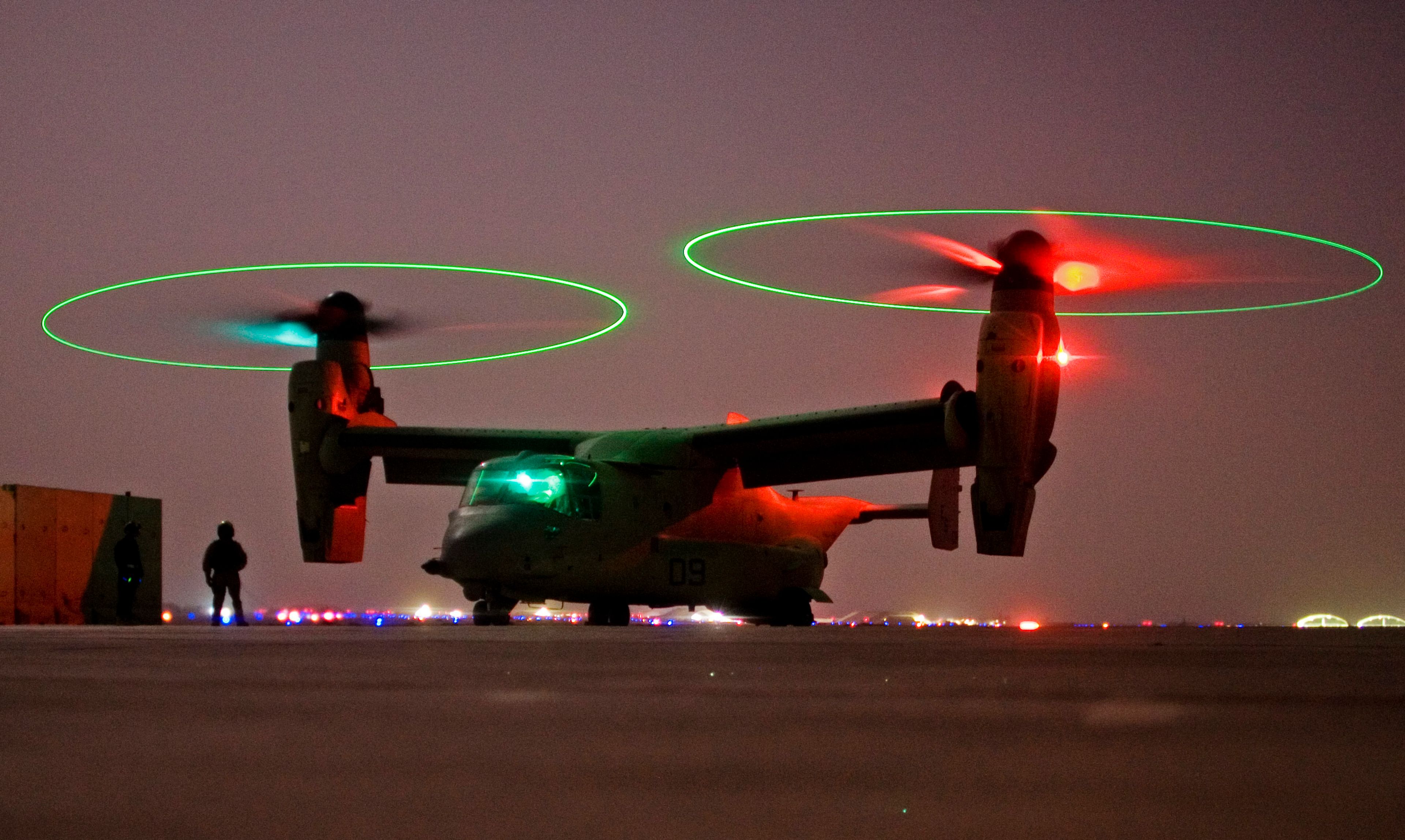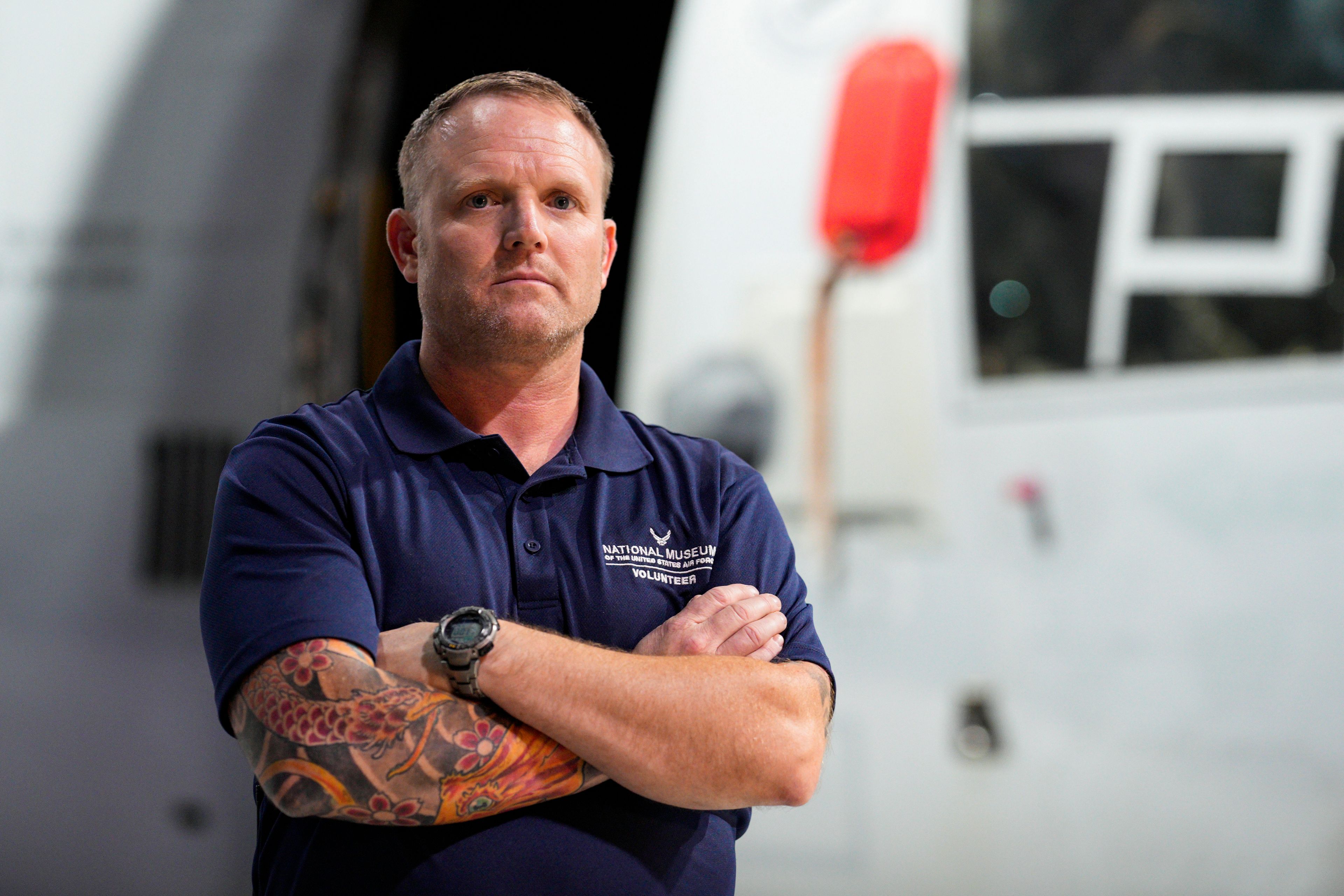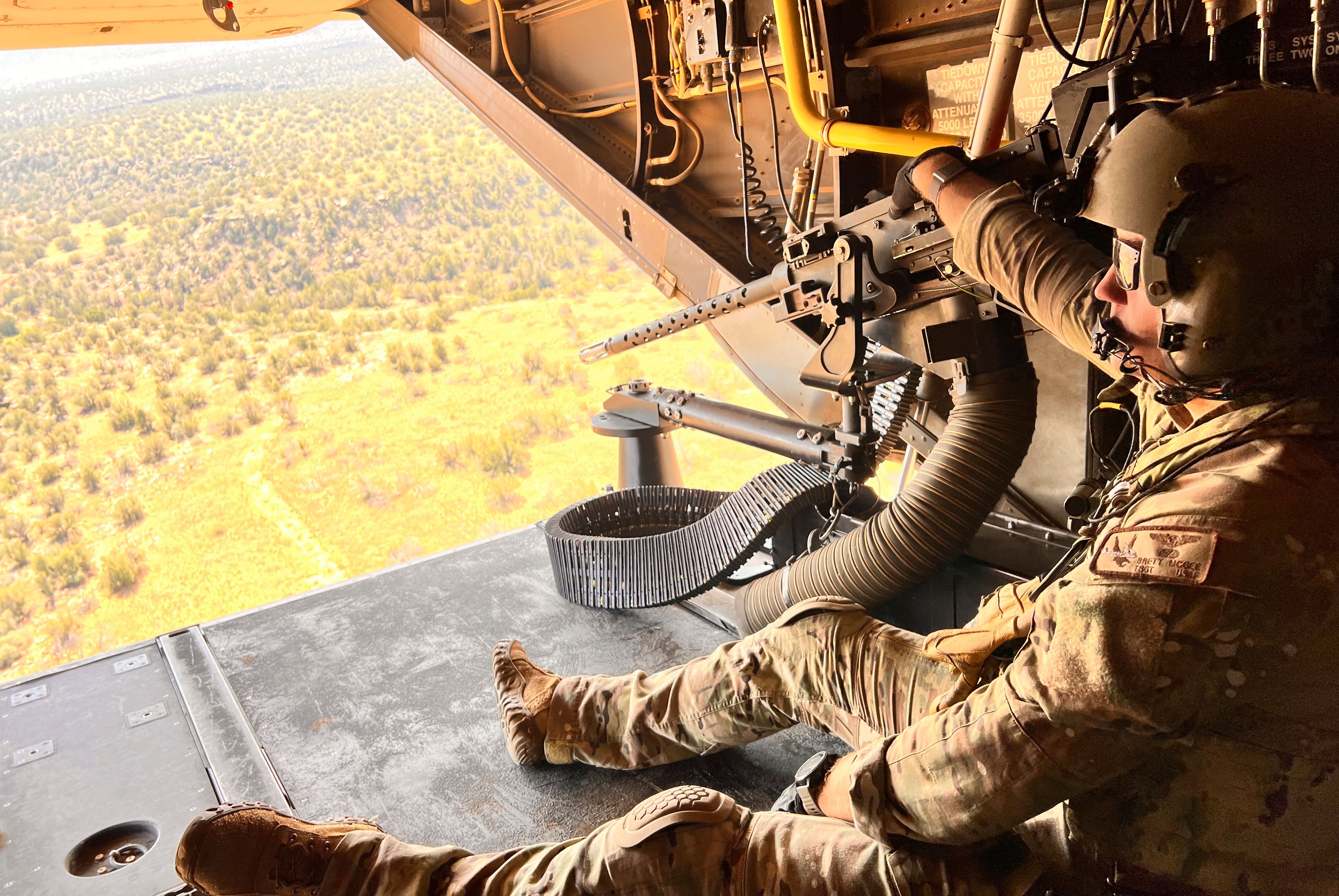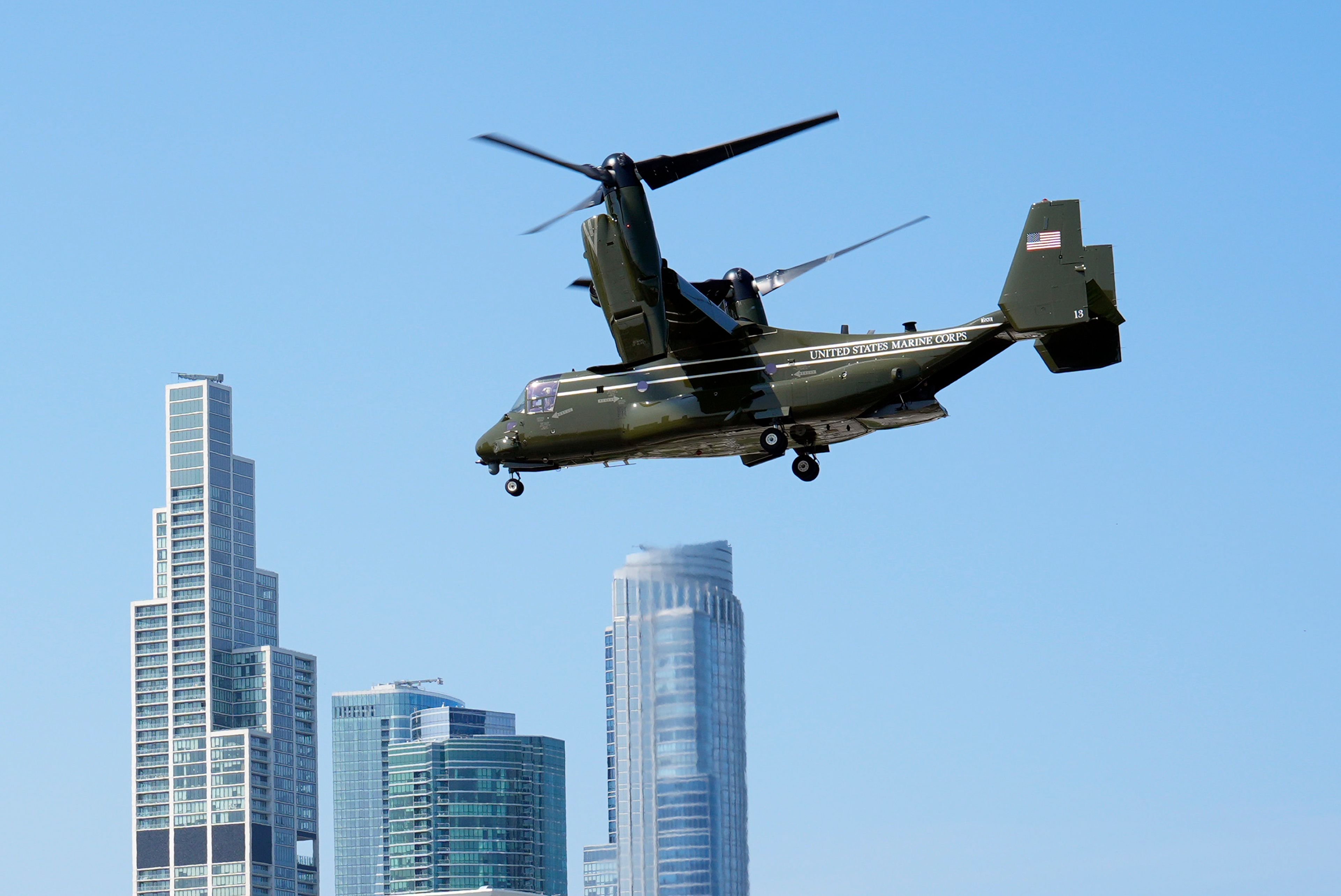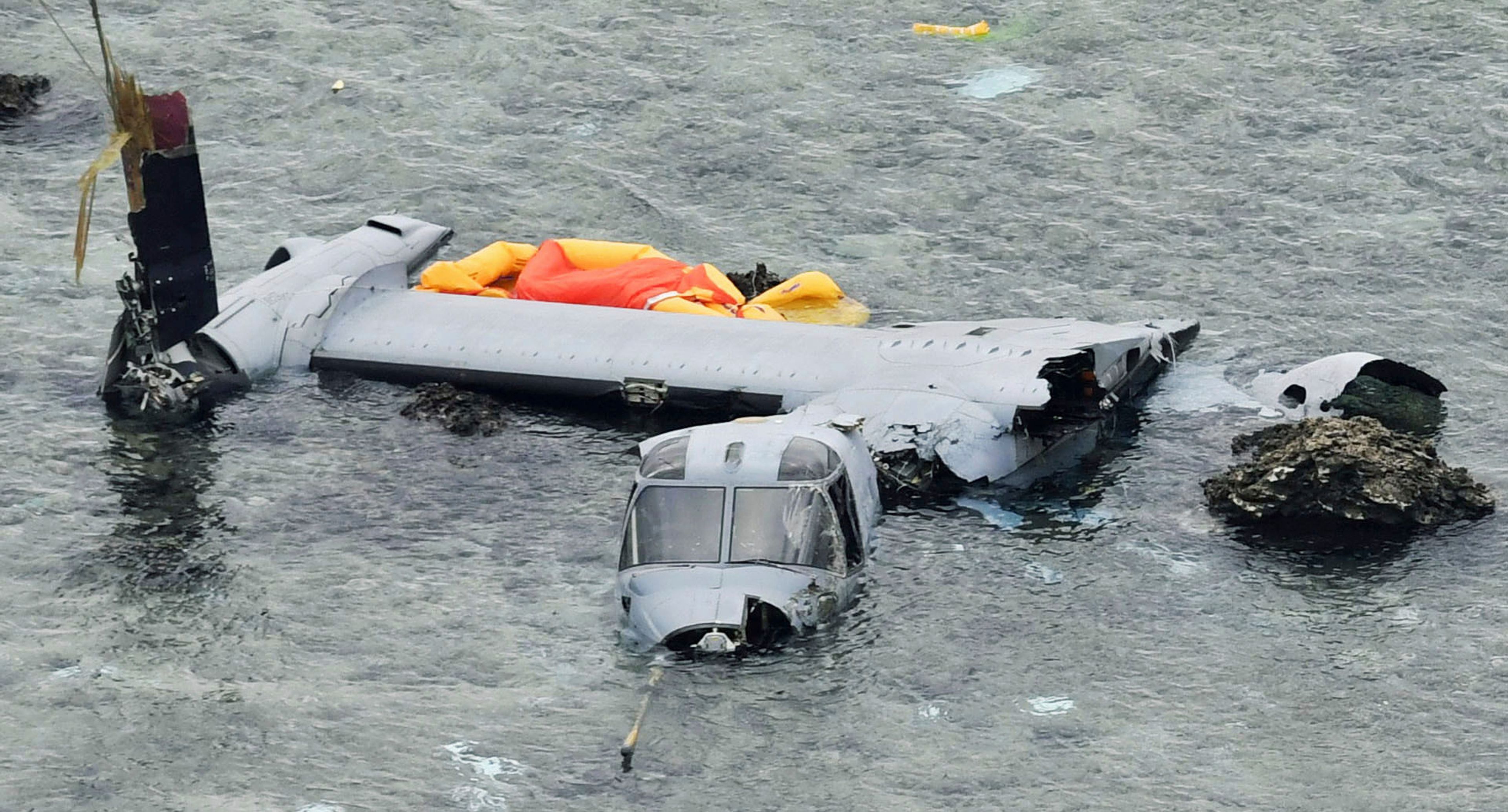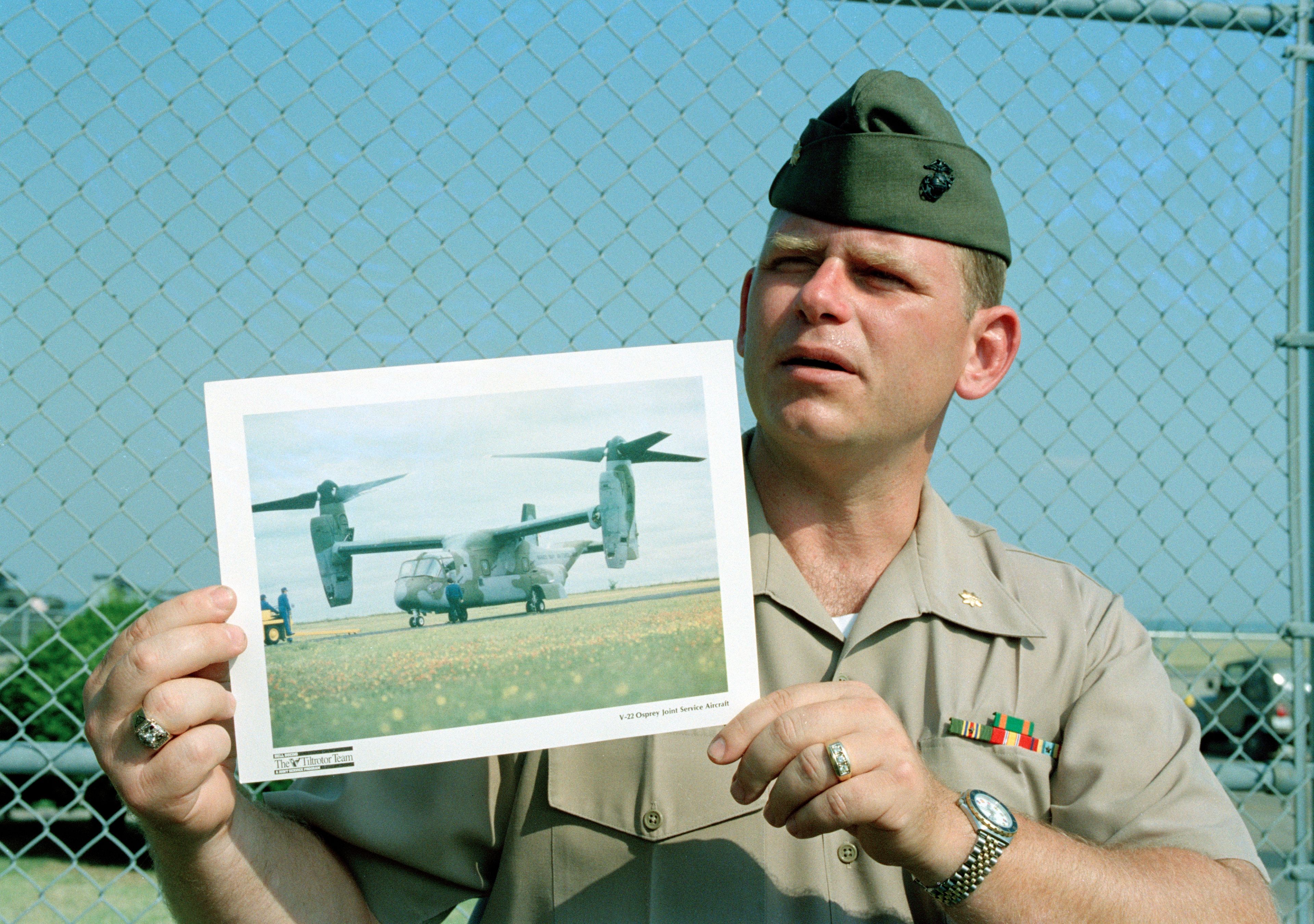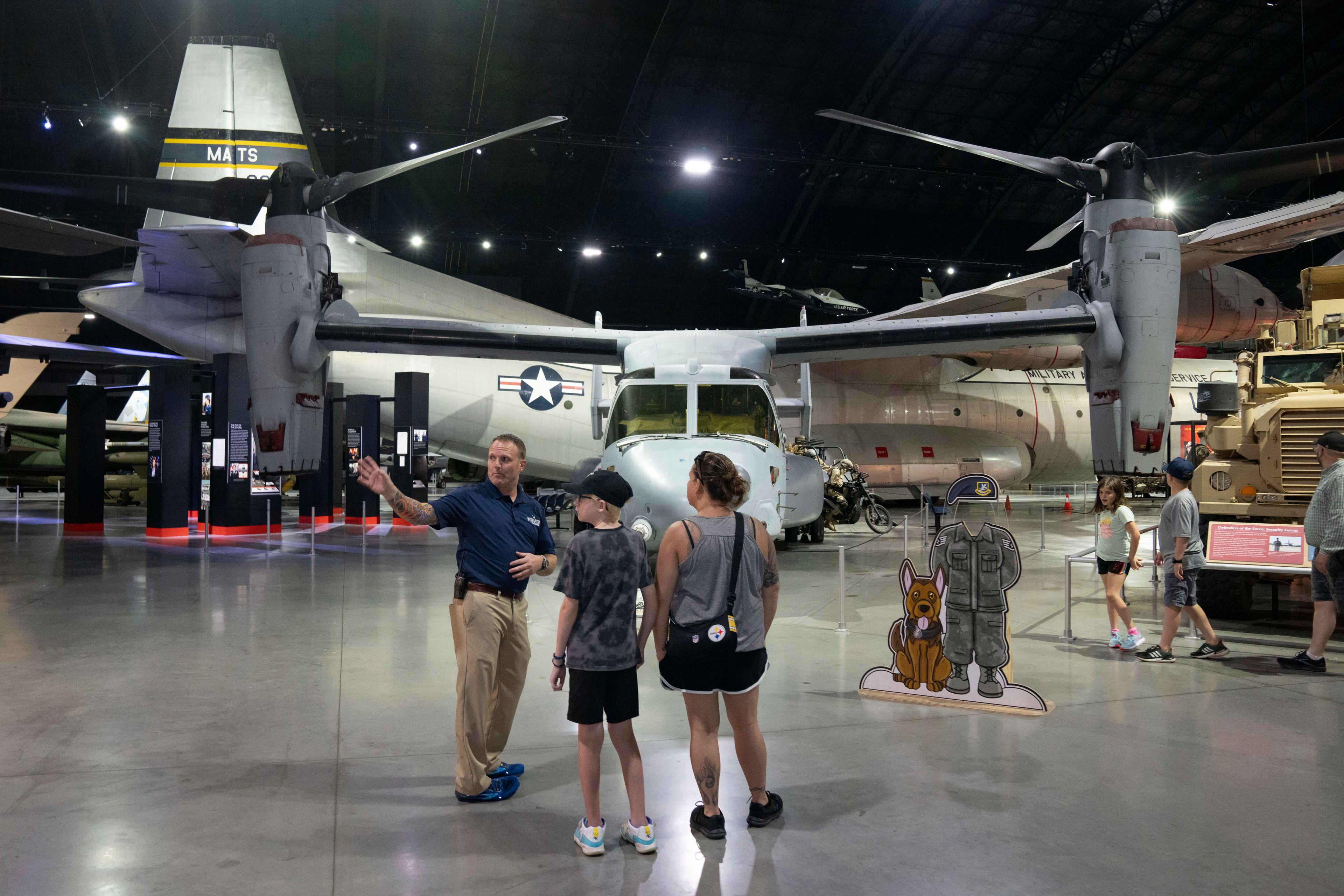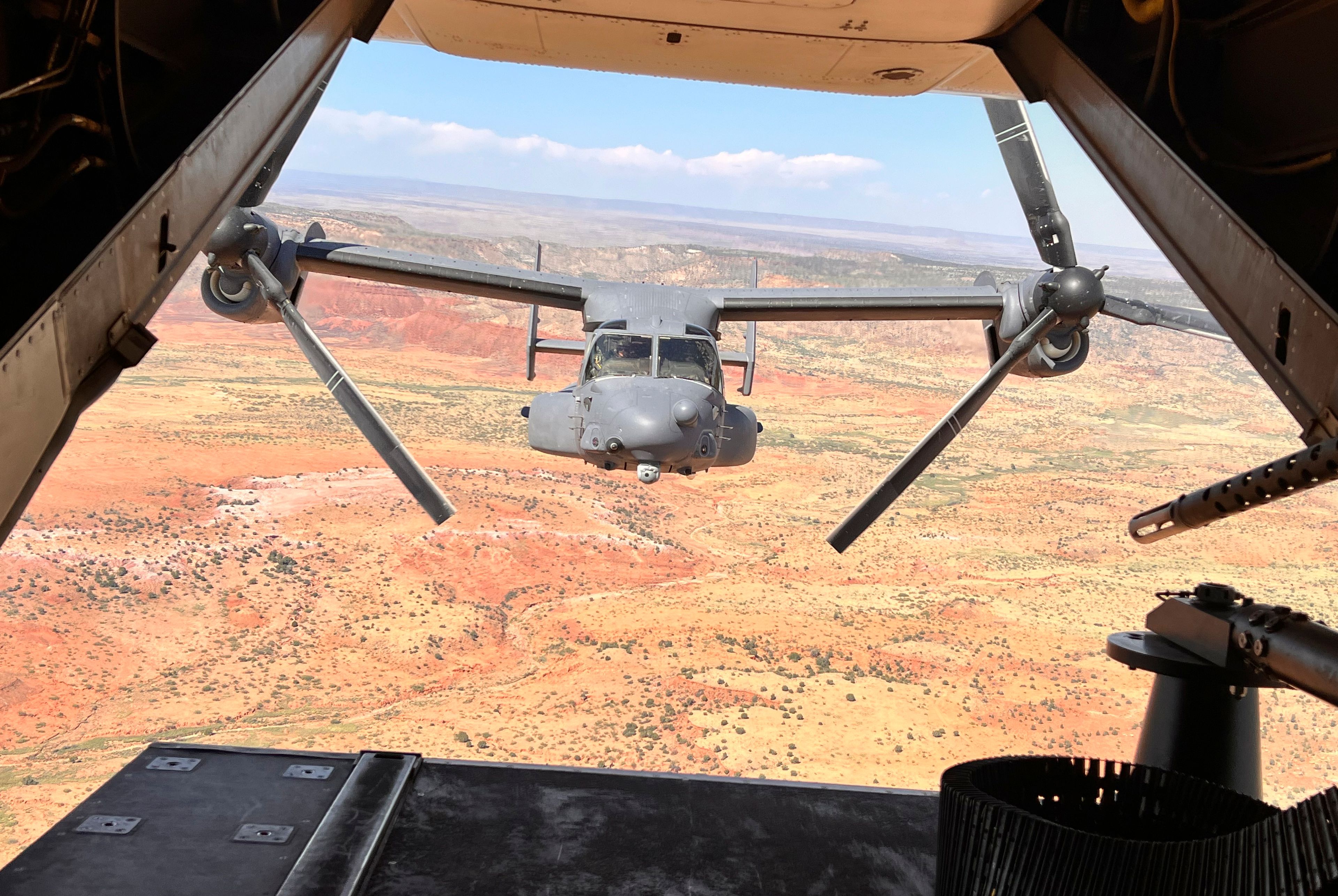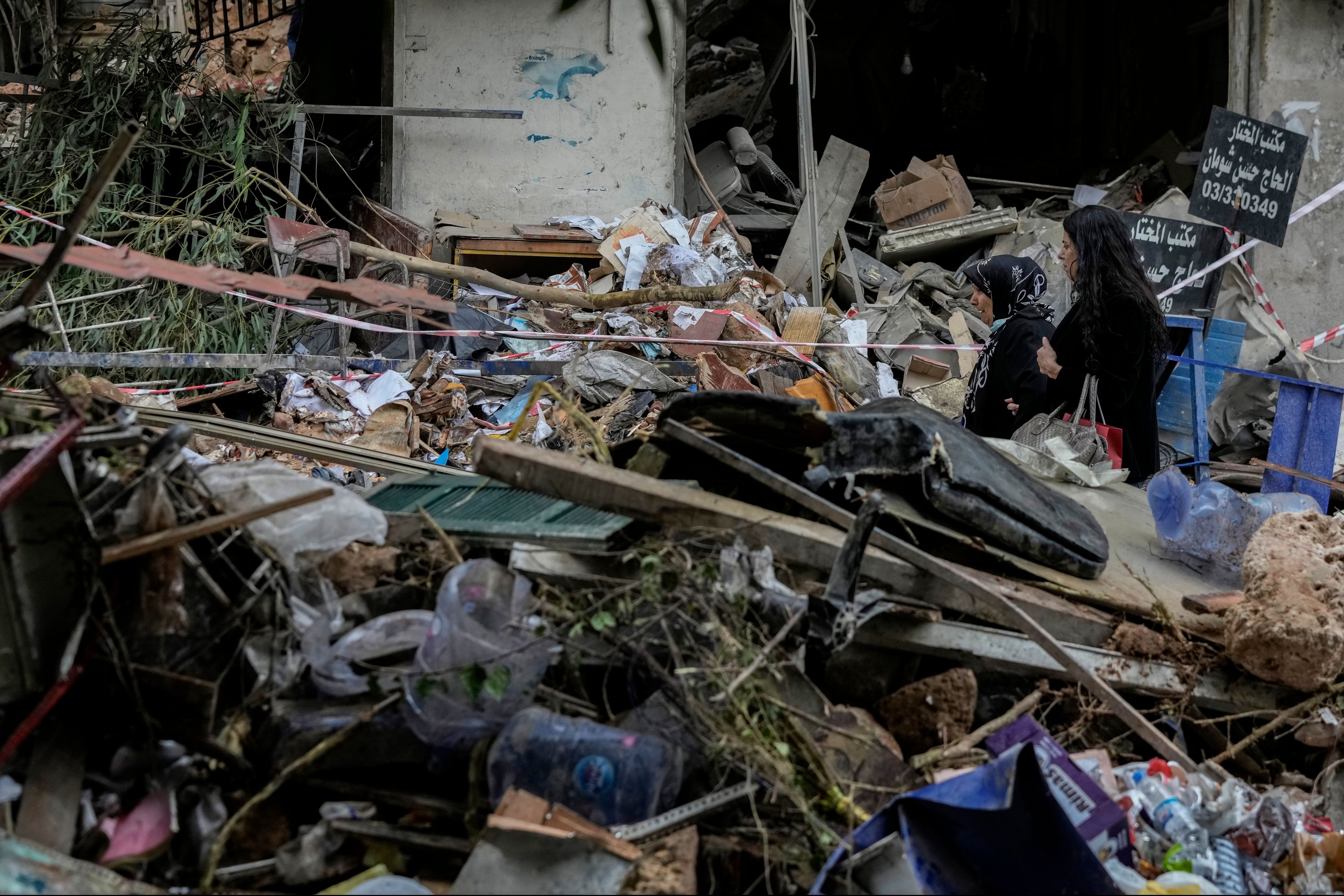Takeaways from the AP's investigation into Osprey safety issues
After being grounded for months following a crash last November that killed eight service members in Japan, the V-22 Osprey — a complicated aircraft that flies fast like a plane but converts to land like a helicopter — is back in the air.
After being grounded for months following a crash last November that killed eight service members in Japan, the V-22 Osprey — a complicated aircraft that flies fast like a plane but converts to land like a helicopter — is back in the air.
But there are still questions as to whether it should be.
Since the military started flying the aircraft three decades ago, 64 personnel have been killed and 93 injured in crashes. Japan’s military briefly grounded its fleet again late last month after an Osprey tilted violently during takeoff and struck the ground.
To assess its safety, The Associated Press reviewed thousands of pages of accident reports and flight data obtained through the Freedom of Information Act, interviewed more than 50 current and former program officials, crew members and experts, and flew both simulator and real training flights.
The AP found that safety issues have increased in the past five years and that the design of the aircraft itself is directly contributing to many of the accidents.
Yet past and present Osprey pilots — even those who have lost friends in accidents or been in crashes themselves — are some of the aircraft’s greatest defenders. Ospreys have been deployed around the world, rescuing U.S. service personnel from ballistic missiles in Iraq and evacuating civilians in Niger.
“There’s no other platform out there that can do what the V-22 can do,” said former Osprey pilot Brian Luce, who has survived two crashes. “When everything is going well, it is amazing. But when it’s not, it’s unforgiving.”
Osprey safety issues have increased
The AP found that the top three most serious types of incidents rose 46% between 2019 and 2023, while overall safety issues jumped 18% in the same period before the fleet was grounded.
Moreover, the AP found that over the past five years, not only have incidents climbed for both the Marine Corps and Air Force, but that the rise in safety problems largely involved the Osprey’s engine or drive system.
There were at least 35 instances where crews experienced an engine fire, power loss or stall, 42 issues involving the proprotors and at least 72 instances of chipping. That means that the gears inside the transmission or drive system become so stressed they flake off metal chips that can quickly endanger a flight.
The Marine Corps maintains that the Osprey is still one of the safest aircraft in its fleet. Over the past decade, the rate that it experienced the worst type of accident resulting in either death or loss of aircraft was 2.27 for every 100,000 hours of flight. That compares with 5.66 for its other heavy lift helicopter, the CH-53.
Those numbers don’t tell the whole story. The Marines’ three most serious categories of accidents climbed from 2019 to 2023 — even as the number of hours they flew their Ospreys dropped significantly, from 50,807 total hours in fiscal 2019 to 37,670 hours in 2023, according to data obtained by the AP.
The Air Force’s Osprey has a much higher rate of the worst type of accidents per 100,000 flight hours than its other major aircraft, and its accidents have also climbed even as flight hours have dropped.
Challenges are tied to the Osprey’s design
Experts said the Osprey’s failures have a variety of causes. In the 1980s, when the V-22 was still in early concept for Bell Flight and Boeing, the Marine Corps got to call the shots on the Osprey's final design because it committed to buying most of them. The Marines wanted an aircraft that could carry at least 24 troops and take up the same limited amount of space on a ship deck as the CH-46 helicopter, which the Osprey was replacing.
Those design limitations made the Osprey weigh more than twice as much as the CH-46.
Because of the Osprey’s weight, the blades needed to be longer, but couldn’t be — they would have hit the body of the aircraft or the tower on the ship deck.
As a result, the Osprey’s proprotors — which work as propellers while flying like an airplane and as rotor blades when functioning as a helicopter — are too small in diameter for the aircraft’s weight, which tops out at 60,500 pounds.
To help with weight, the Osprey’s entire engine and transmission bends like an elbow to shift to a vertical position when it flies like a helicopter — and engines don’t like to be vertical.
How the design affects safety
While designing the engines to rotate vertically helped the Osprey takeoff, it also created dangers that crews still have to mitigate today.
When flying as a helicopter, the engines can’t cool down because they don’t get enough air flow. The hydraulic lines at the joint can wear down, and the aircraft is difficult to maintain.
The Osprey’s first fatal crash in 1992 occurred because pooled fluids spilled back down into the engine as the aircraft converted from flying horizontally like a plane to vertically like a helicopter to land. It caught fire and crashed, killing seven.
A 2000 crash that killed four Marines happened when a worn-down hydraulic line ruptured and the Osprey lost power.
Then there’s dust. When the Osprey hovers in helicopter mode, the air and exhaust it creates can kick up a wall of dust and debris that can get sucked back into the engines, clogging and degrading them.
In 2015, a Marine Corps Osprey hovering for 45 seconds in Hawaii disturbed so much sand and dust that the crew had to abort and try again to land, because they could no longer see. On their second attempt, the Osprey’s left engine stalled and the aircraft dropped flat, killing two Marines.
Pilots have to fly perfectly
Pilots face very sensitive instruments that change from working like the controls inside an airplane to operating like those inside a helicopter.
The aircraft’s cockpit is also crammed with messaging and navigation screens, and rows of control buttons. The aircraft is frequently flashing error codes — but crews can get desensitized to them, what one Osprey pilot called the “fatigue of small errors.”
If there are other complications in flight or a pilot is distracted or misses the significance of an aircraft warning light, those mistakes can turn dangerous quickly.
Lt. Col. Seth Buckley, director of operations for the 20th Special Operations Squadron, which flies Ospreys, acknowledged that he puts a lot of pressure on his crews to be perfect for their own safety.
“You have to take that mindset because there are so many things you can do in this aircraft to induce worse problems,” Buckley said.
Connect with the Southeast Missourian Newsroom:
For corrections to this story or other insights for the editor, click here. To submit a letter to the editor, click here. To learn about the Southeast Missourian’s AI Policy, click here.

